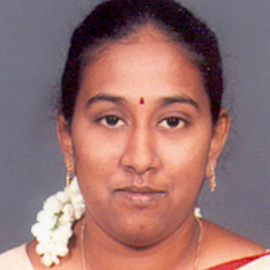
Shalini Ramanathan
Work place: Department of Computer Science and Engineering, National Institute of Technology, Tiruchirappalli, Tamil Nadu, India
E-mail: 406916001@nitt.edu
Website:
Research Interests: Neuroinformatics, Image Manipulation, Image Processing, Medical Image Computing, Mathematics of Computing
Biography
Shalini Ramanathan is a research scholar in the Department of Computer Science and Engineering at National Institute of Technology, Tiruchirapalli, Tamil Nadu, India. She finished her M.E. (CSE) from Government College of Technology, Coimbatore, Tamil Nadu, India. Her research areas include Medical image processing, Neuroscience, Neuroinformatics, High-performance computing, and Graph theory.
Author Articles
Uncovering Brain Chaos with Hypergraph-Based Framework
By Shalini Ramanathan Mohan Ramasundaram
DOI: https://doi.org/10.5815/ijisa.2020.04.04, Pub. Date: 8 Aug. 2020
The scientist has proven that the birth of neurons in a region of adult rat brain migrates from their birthplace to other parts of the brain. The same process also happens in adult humans. There was no efficient visualization tool to view the functions and structures of the human brain. In this paper, we focus to design a framework to understand more about Alzheimer’s disease and its process of neurons in the human brain. This framework named a hypergraph-based neuron reconstruction framework. It helped to map, the birth and death of neurons with the construction and reconstruction of the hypergraph. This framework also recognizes the structural changes during the life cycle of the neuron. Its performance was evaluated quantitatively with small-world networks and robust connectivity measures.
[...] Read more.Drugs Relationship Discovery using Hypergraph
By Shalini Ramanathan Mohan Ramasundaram
DOI: https://doi.org/10.5815/ijitcs.2018.06.06, Pub. Date: 8 Jun. 2018
Globally, the governments are concerned for saving human life but in recent days, the cost of medicine to save the human life grows rapidly, due to the different combination of the drugs sold by the drug store and based on the drugs availability in the drug store. As a regular routine, the Clinical physicians prescribe the drug name or druggist company name for the patient, instead of prescribing the brand name. For a particular drug name, more number of brand name both generic drugs and combination drugs were available. Almost all the physicians or druggist knows these generic drugs and combination drugs along with their dosage and recommends it for the patient. Since the patients are unaware about the brand name of the medicine, they are buying the costly drug without knowledge. At the same time the patients whoever provide the review on the drug consumed, mostly gives a negative review. On the other side, Government gives approval for every drug produced year by year and those drugs getting rejected for approval where sent for new alternative extension of chemical formula, as well government bans several combinations of drugs. There should be a database for awareness; it should help physicians, druggist and end user to look for banned and unbanned drug. We have identified that the drug details and their approvals were not maintained in the database. So, the proposed work is (i) to identify and classify the exact drug, which can be used as generic or combination and (ii) to create a banned drug model representation, which was unavailable.
A hypergraph-based model named Drugs Relationship Discovery using Hypergraph (DRDH) was constructed as a preliminary design representation for drugs. Here, the drugs combination was considered as a hypervertex and the combination approved for manufacturing in the particular company was considered as an edge, having weight as the price of single dose usage based on Indian government listed drug. With this proposed model as a reference, the banned drugs are listed separately, manufacturing stopped drugs are highlighted with the weight of -1 and the physician or druggist can access the model to ensure the correct drug, their production, and usage. The Time complexity has been analyzed for the hypergraph, which was constructed based on the details of relationship identified among the drugs. Using the parameters of the list of drugs used in India on fever and the common cold, comparison over time taken to identify the relationship has also been done.
[...] Read more.Other Articles
Subscribe to receive issue release notifications and newsletters from MECS Press journals